Hello, and welcome back!
I hope all of you have been well since my last blog post in October, and I’m very happy to be back with you.
Of course, this is my first post since the installation of the new Archbishop of Boston, Richard Henning, which was a great event in the life of our Church.

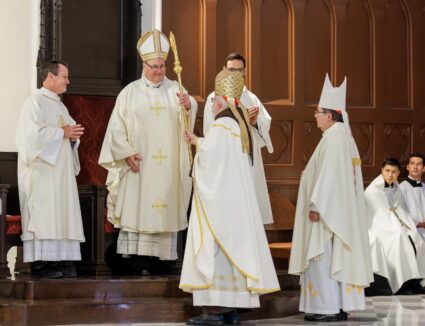
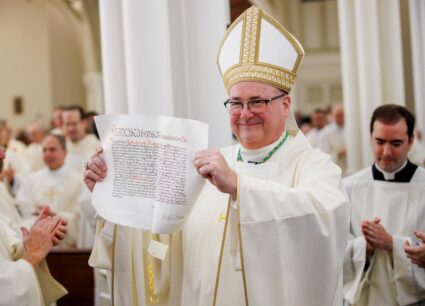
It’s always a very historic moment when the new archbishop comes. I was particularly impressed by how many bishops and cardinals were present with us. When I was installed, we were not in a position to invite bishops from outside to attend. So, it was a great joy to see that at this point in our history, we were able to host about 60 bishops and six cardinals.
I was also particularly happy to see that so many Eastern Rite priests and bishops were able to be with us. It’s always good for our Catholic people to be reminded of the universality of the Church and the many different rites that we have, many of which are present locally.
So, I was delighted that Bishop François Beyrouti of the Melkite Eparchy of Newton, which shares territory with the archdiocese, was there for Archbishop Henning’s installation and had the idea of gathering the Eastern Rite priests and bishops for a picture. He sent it to me just the other day, and I thought it would be nice to share with you.

Of course, many people are aware that we tragically lost one of our young priests last month, Father Corey Bassett-Tirrell. Just a couple weeks before he died, I had been with him, and he helped prepare a meal for us and was full of life and joy. So, his sudden death was a shock.
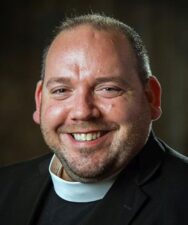
I was happy to be able to lead the prayer service at his wake at St. Aldelaide’s in Peabody and be able to tender my condolences to his father, brother and members of his family and friends. I was very touched by the outpouring of affection for Father Corey.
When I was there, they showed me their new Blessed Sacrament Chapel at the parish.
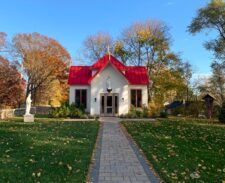
Not long afterward, I traveled to Baltimore for the Fall Plenary Assembly of the U.S. Conference of Catholic Bishops.
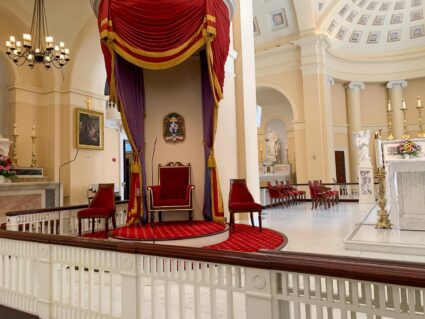
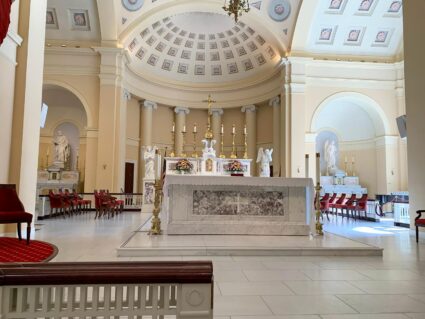
It’s our custom that, during the assembly, all the Boston bishops gather for a nice meal together, and this was our chance to welcome Archbishop Henning to that gathering.
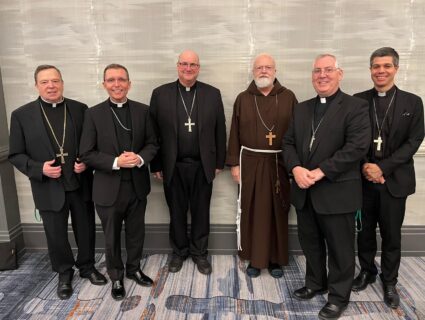
During the conference, I was very pleased to be honored by the bishops’ Subcommittee on Hispanic Affairs as one of the recipients of their Encuentro Award for contributions to the advancement of Hispanic ministry.
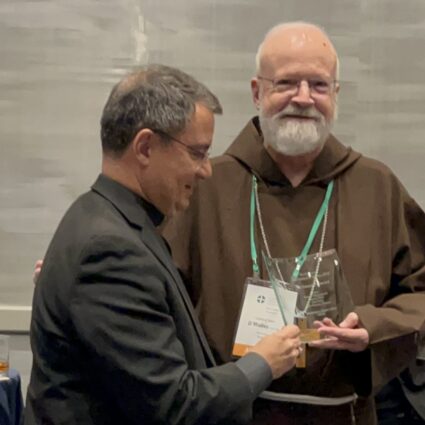
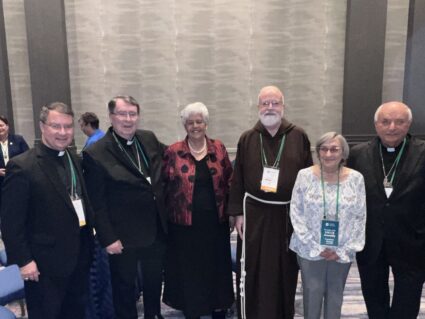 The ceremony took place on the Wednesday of the conference, and I was honored along with Sister Ana María Pineda of Santa Clara University, Carmen Aguinaco of the National Catholic Council for Hispanic Ministry and Bishop Gerald Barnes.
The ceremony took place on the Wednesday of the conference, and I was honored along with Sister Ana María Pineda of Santa Clara University, Carmen Aguinaco of the National Catholic Council for Hispanic Ministry and Bishop Gerald Barnes.
Also, during the conference, there was a reception hosted by The Catholic University of America to thank me for my service and discuss CUA’s new Endowed Chair of Hispanic Catholic Studies in my name.
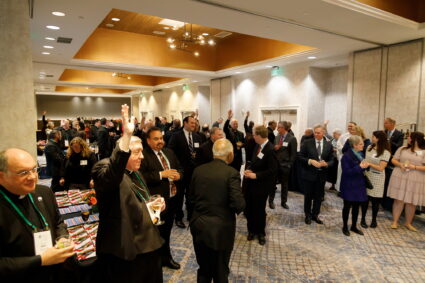

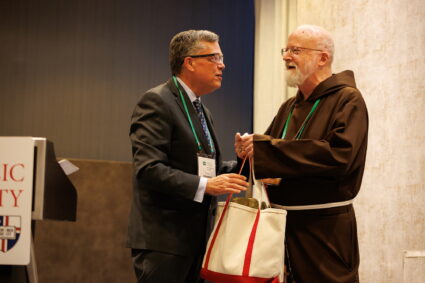
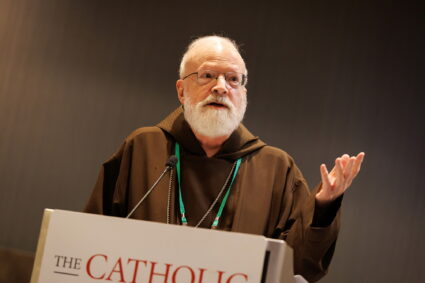
More than a personal honor, this chair signifies a deep commitment by the university to the future of Hispanic ministry in our country. For many decades, I have seen firsthand the vibrancy and deep faith of our Hispanic communities. At the same time, I have also seen the growing need for dedicated resources to support the Church’s ministry to this important group that more and more makes up a significant portion of the Church in the U.S. I know that the establishment of this new chair will not only benefit Hispanic Catholics but will enrich and strengthen the entire Church in our country.
I came back from Baltimore to attend St. John’s Seminary’s gala dinner at the Museum of Fine Arts to mark their 140th anniversary. It’s the first time they have held a gala like this, and they had a wonderful turnout.
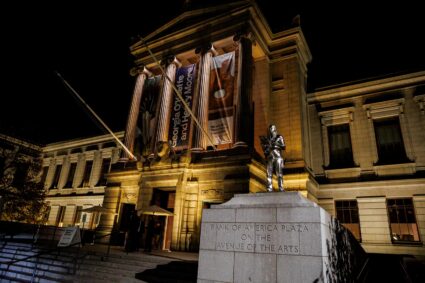
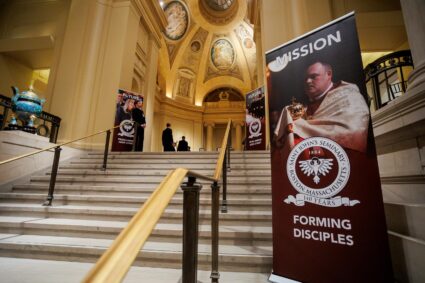
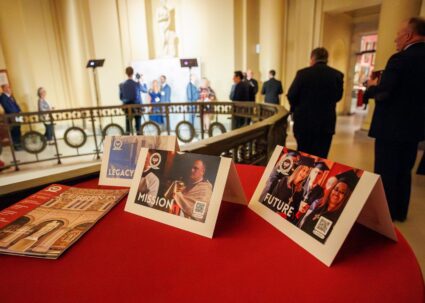

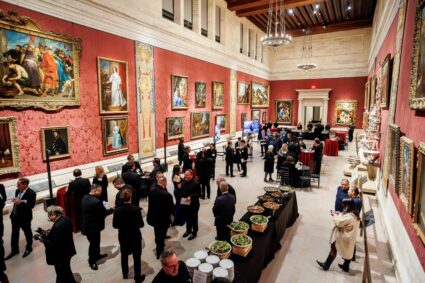
Of course, it was a great venue to hold it in, and I think many people were amazed at how much of the artwork that surrounded us had religious themes.
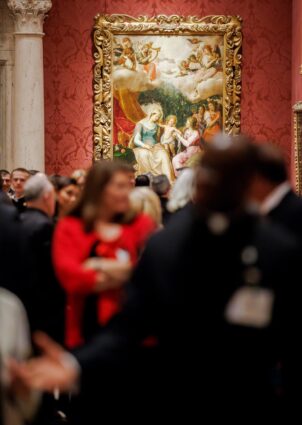
I’ve felt it was very important for the seminary to begin an annual fundraiser around which friends and benefactors can gather to express their support for the seminary, which has been such a blessing for the archdiocese for almost a century and a half.
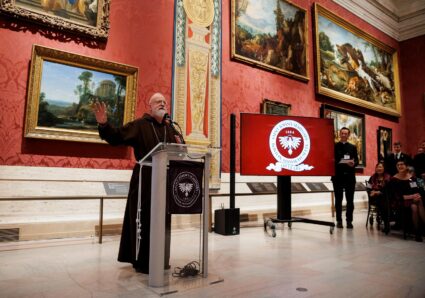
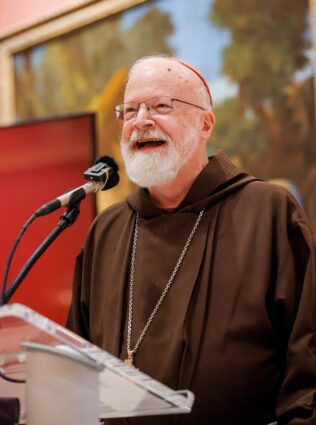
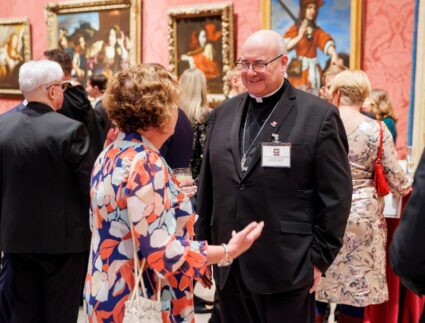
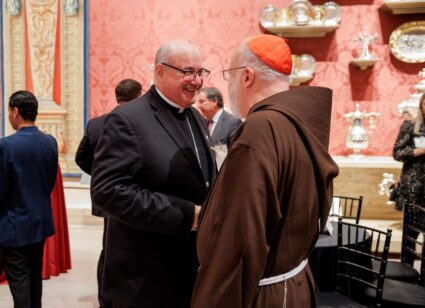
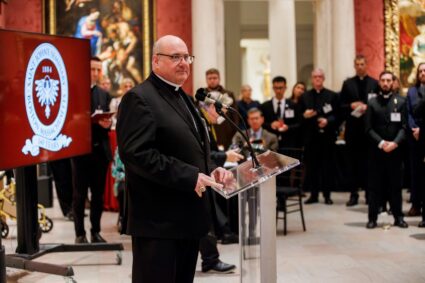
It was also an opportunity to thank the rector, Msgr. Stephen Salocks, who has given so many years of his life to the formation of our future priests, both as a professor and now as rector.
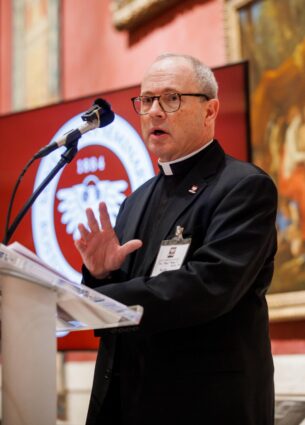
The one time each year that I gather with most of my relatives is Thanksgiving. Since most of the family lives in Florida, we gathered at the house of my aunt and cousin in Fort Lauderdale.
Each year, before we sit down for our Thanksgiving meal, we always have a Mass together at the local parish. During the Mass this year, we had the baptism of a new nephew, Robert Dineen, the child of my cousins Kathleen and Bradley.
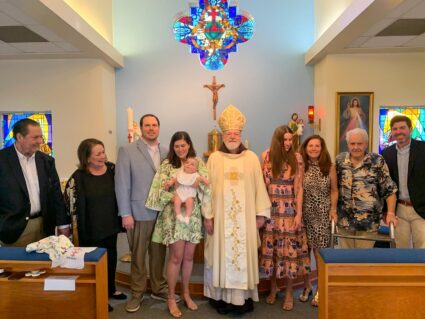
I had baptized Kathleen 30 years ago and now I had the joy of baptizing her son. Shortly thereafter, I passed through Portugal on the way to Rome, where I had another baptism of a baby, Maria, whose mother I also baptized many years ago.
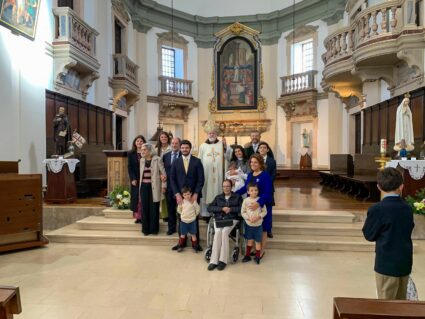
As a priest, it’s a joy to be able to see how people live out their life of discipleship and continue the sacraments in their lives and are now sharing that same faith and joy with their children. (Though I presume that someone else after me will have to baptize the children of these babies!)
The baptism in Portugal was in a town called Ourém, which is very close to Fatima. The church in Ourém is over 700 years old and right next to a Moorish castle that’s over a thousand years old.
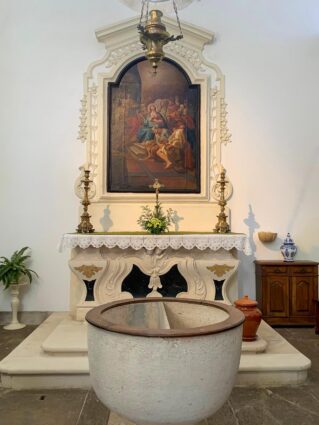

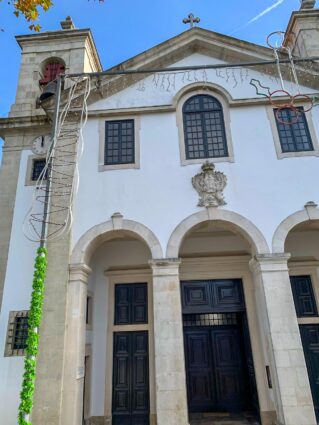
Because it’s so close to the Shrine of Fatima, we went there to pray at the Chapel of the Apparitions.
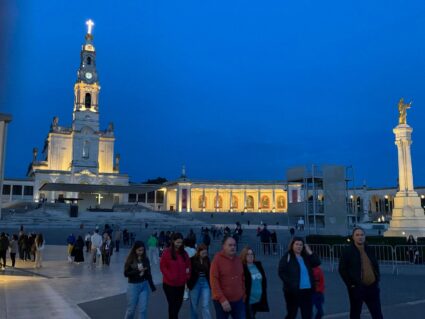
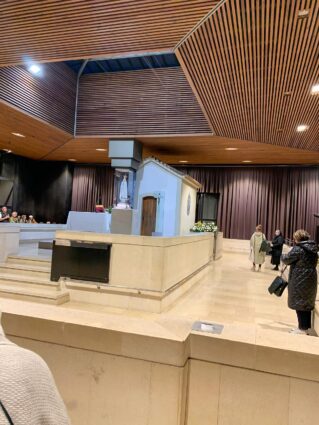
I was surprised to see how many pilgrims were there. It was very encouraging to see because the large pilgrimage groups are often there on the 12th or the 13th of the month, but this was not one of those days.
As I say, for about the last week, I have been in Rome taking part in meetings of the Council of Cardinals, the so-called C9.
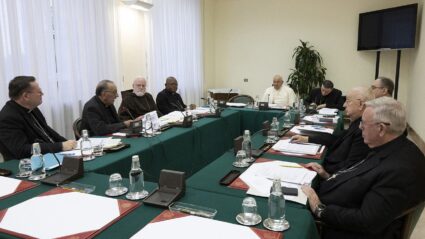
One of the central themes of our session was collegiality in the Church, and Cardinal Marcello Semeraro led a discussion on the relationship between particular churches and ecclesial assemblies. We also offered our reflections on our experiences of the Synod and continued our discussions on the role of women in the Church.
Another important focus of our meetings was the implementation of the Apostolic Constitution Praedicate Evangelium in diocesan curias and its application in the various regions. In addition, Cardinal Gracias gave us a report of his study group’s efforts on the topic “The role of Papal Representatives in a synodal missionary perspective.”
One night, I had an opportunity to have dinner with Colleen Donohoe, who worked in our Catholic Schools Office for many years and is now the Superintendent of Catholic Schools for the Diocese of Charleston, South Carolina.
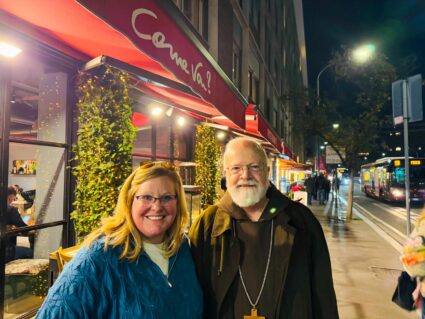
It was very good to see her again.
I also had a very interesting encounter with a German gentleman I met on the street. Many people may not know this, but there’s a German custom of collecting autographed pictures of bishops, and then they trade them like we do baseball cards. So, this man had all sorts of pictures of me that he wanted to sign, and he gave me some of them, including this one of me with the Holy Father when he was Archbishop of Buenos Aires.
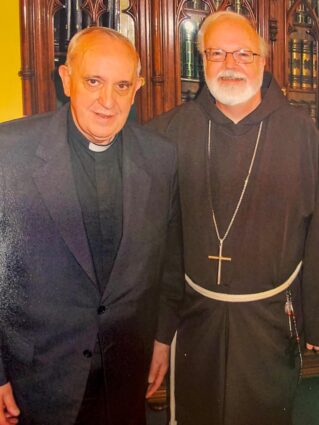
Thursday, I had a meeting with the Pontifical Commission for the Protection of Minors. And earlier today, I went to the first of the Advent sermons of the new Preacher of the Papal Household, Father Roberto Pasolini. His theme this year is “Doors of Hope.”
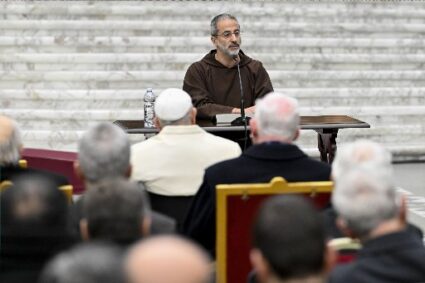
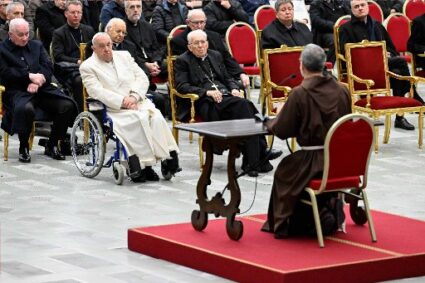
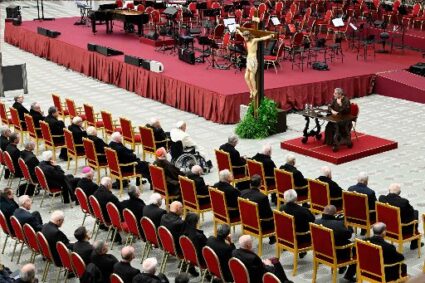
Afterward, I had a meeting with the Holy Father in the Apostolic Palace.
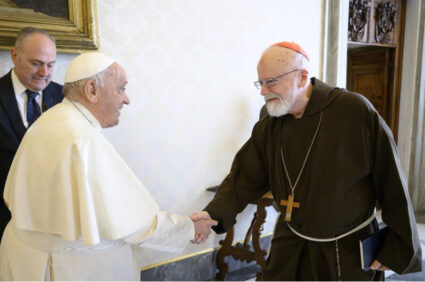
Of course, since it is Advent, the Holy See has placed a Nativity Scene and a colorful Christmas tree in the center of St. Peter’s Square.
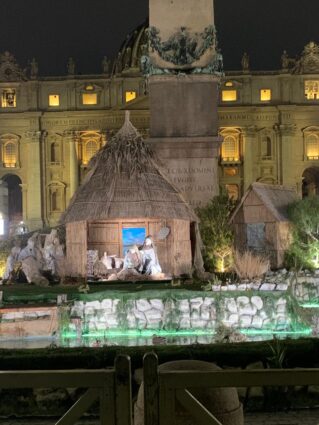
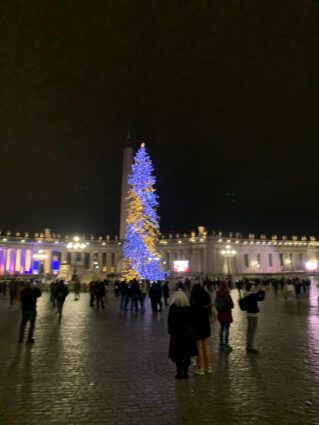
Finally, I want to share this pastoral letter that was issued by Cardinal Nichols of Westminster, England.
We see how the issue of physician-assisted suicide is moving ahead in many places, and there have been indications in England and now in Ireland that legislators are considering this. Unfortunately, I think a lot of people, when they are asked about this issue, don’t take into account the full implications of legalizing assisted suicide. So, I think more catechesis around this issue is very helpful, and I think Cardinal Nichols’s letter is a very cogent defense of life. I hope that it will have an influence in the British Isles and Ireland.
In both places, there is still a process underway, but, as Cardinal Nichols points out, in the countries where physician-assisted suicide is legalized, it almost immediately begins to lead to more and more legislation allowing more drastic interpretations of the law. For example, right now in Canada, the number of people who are dying from suicide is quite considerable.
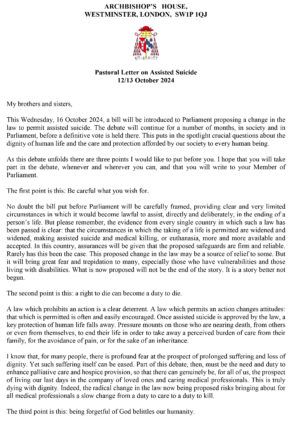
For the Church, this is a great moral problem, and it is really undermining people’s appreciation for the sacredness of life. Cardinal Nichols puts it so well when he writes, “The right to die can become a duty to die” when pressures are put on the elderly, the sick and the disabled.
So, I want to share this letter with you. I think it’s a very important contribution to the conversation.
My brothers and sisters,
This Wednesday, 16 October 2024, a bill will be introduced to Parliament proposing a change in the law to permit assisted suicide. The debate will continue for a number of months, in society and in Parliament, before a definitive vote is held there. This puts in the spotlight crucial questions about the dignity of human life and the care and protection afforded by our society to every human being.
As this debate unfolds there are three points I would like to put before you. I hope that you will take part in the debate, whenever and wherever you can, and that you will write to your Member of Parliament.
The first point is this: Be careful what you wish for.
No doubt the bill put before Parliament will be carefully framed, providing clear and very limited circumstances in which it would become lawful to assist, directly and deliberately, in the ending of a person’s life. But please remember, the evidence from every single country in which such a law has been passed is clear: that the circumstances in which the taking of a life is permitted are widened and widened, making assisted suicide and medical killing, or euthanasia, more and more available and accepted. In this country, assurances will be given that the proposed safeguards are firm and reliable. Rarely has this been the case. This proposed change in the law may be a source of relief to some. But it will bring great fear and trepidation to many, especially those who have vulnerabilities and those living with disabilities. What is now proposed will not be the end of the story. It is a story better not begun.
The second point is this: a right to die can become a duty to die.
A law which prohibits an action is a clear deterrent. A law which permits an action changes attitudes: that which is permitted is often and easily encouraged. Once assisted suicide is approved by the law, a key protection of human life falls away. Pressure mounts on those who are nearing death, from others or even from themselves, to end their life in order to take away a perceived burden of care from their family, for the avoidance of pain, or for the sake of an inheritance.
I know that, for many people, there is profound fear at the prospect of prolonged suffering and loss of dignity. Yet such suffering itself can be eased. Part of this debate, then, must be the need and duty to enhance palliative care and hospice provision, so that there can genuinely be, for all of us, the prospect of living our last days in the company of loved ones and caring medical professionals. This is truly dying with dignity. Indeed, the radical change in the law now being proposed risks bringing about for all medical professionals a slow change from a duty to care to a duty to kill.
The third point is this: being forgetful of God belittles our humanity.
The questions raised by this bill go to the very heart of how we understand ourselves, our lives, our humanity. For people of faith in God – the vast majority of the population of the world – the first truth is that life, ultimately, is a gift of the Creator. Our life flows from God and will find its fulfilment in God. ‘The Lord gave, and the Lord has taken away; blessed be the name of the Lord.’ (Job 1:21) To ignore or deny this truth is to separate our humanity from its origins and purpose. We are left, floating free, detached, in a sphere that lacks firm anchors or destiny, thinking that we can create these for ourselves according to the mood of the age, or even of the day.
The clearest expression of this faith is that every human being is made in the image and likeness of God. That is the source of our dignity and it is unique to the human person. The suffering of a human being is not meaningless. It does not destroy that dignity. It is an intrinsic part of our human journey, a journey embraced by the Eternal Word of God, Christ Jesus himself. He brings our humanity to its full glory precisely through the gateway of suffering and death.
We know, only too well, that suffering can bring people to a most dreadful state of mind, even driving them to take their own lives, in circumstances most often when they lack true freedom of mind and will, and so bear no culpability. But this proposed legislation is quite different. It seeks to give a person of sound will and mind the right to act in a way that is clearly contrary to a fundamental truth: our life is not our own possession, to dispose of as we feel fit. This is not a freedom of choice we can take for ourselves without undermining the foundations of trust and shared dignity on which a stable society rests.
As this debate unfolds, then, I ask you to play your part in it. Write to your MP. Have discussions with family, friends and colleagues. And pray. Please remember: be careful what you wish for; the right to die can become a duty to die; being forgetful of God belittles our humanity.
May God bless us all at this critical time.
✠ Cardinal Vincent Nichols
Archbishop of Westminster
Until next time,
Cardinal Seán
